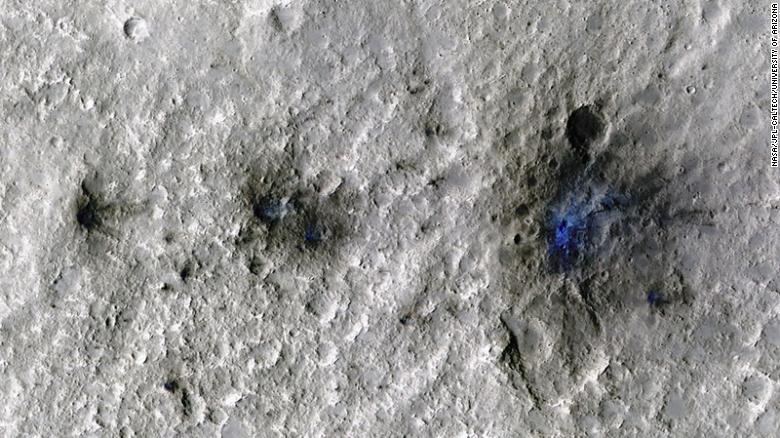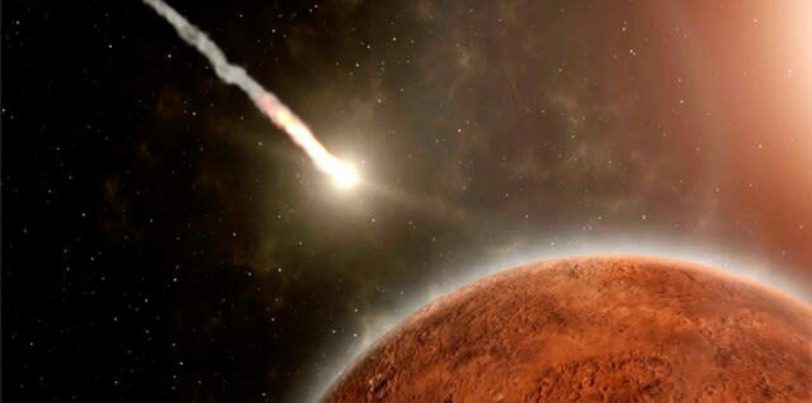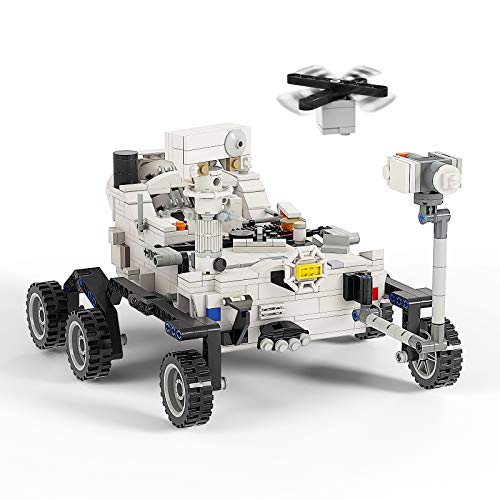The NASA InSight Lander has “heard” and detected the vibrations of four space rocks as they slammed into Mars over the past two years.
It’s the first time a mission has detected both seismic and acoustic waves from a Mars impact, and it’s InSight’s first detection of impacts since landing on Mars in 2018.
Fortunately, InSight wasn’t in the path of these meteoroids, the name for space rocks before they hit the ground. The impacts were between 53 and 180 miles (85 and 290 kilometers) from the stationary lander’s position in Mars’ Elysium Planitia, a smooth plain just north of the planet’s equator.

On September 5, 2021, a meteoroid entered the Martian atmosphere and exploded into at least three shards, each of which left a crater on the red planet’s surface.
The Mars Reconnaissance Orbiter then flew over the landing site to confirm its location, spotting three darkened areas. The High-Resolution Imaging Science Experiment camera on the orbiter captured detailed close-ups of the craters.
Researchers published their findings about the new craters in the journal Nature Geoscience on Monday.
“After three years of InSight waiting to detect an impact, those craters looked beautiful,” said study coauthor Ingrid Daubar, assistant professor of Earth, environmental, and planetary sciences at Brown University in Providence, Rhode Island, in a statement.
InSight data also revealed three other similar impacts, one on May 27, 2020, and two more in 2021, on February 18 and August 31.
On Monday, the agency released a video of a Martian meteoroid impact. Listen for a very science fiction-sounding “bloop” three times during the video as the space rock enters the atmosphere, explodes into pieces, and hits the surface.
Scientists have questioned why more impacts haven’t been detected on Mars, given that the planet is located near our solar system’s main asteroid belt, from which many space rocks emerge to hit the Martian surface. Because the Martian atmosphere is only 1% the thickness of Earth’s, more meteoroids can pass through it without disintegrating.
During its stay on Mars, InSight’s seismometer detected over 1,300 marsquakes, which occur when the Martian subsurface cracks due to pressure and heat. The sensitive instrument can detect seismic waves thousands of miles away from InSight, but this is the first time scientists have used the waves to confirm an impact.
It’s possible that the noise of Martian wind or seasonal changes in the atmosphere obscured the additional impacts. Researchers expect to find more when they comb through InSight’s data from the last four years now that they understand what an impact’s seismic signature looks like.
Seismic waves, which change as they move through different materials, are helping researchers in learning more about the interior of Mars.
Meteoroid impacts cause earthquakes with magnitudes of 2.0 or less. So far, the largest detected quake by InSight was a magnitude 5 event in May.
Scientists use impact craters to determine the age of a planet’s surface. Researchers can also determine how many of the craters formed early in the solar system’s turbulent history.
“Impacts are the clocks of the solar system,” said lead author Raphael Garcia, academic researcher at the Institut Supérieur de l’Aéronautique et de l’Espace in Toulouse, France, in a statement. “We need to know the impact rate today to estimate the age of different surfaces.”
Researchers can analyze the trajectory and size of the shock wave produced when the meteoroid enters the atmosphere as well as when it hits the ground by studying InSight’s data.
“We’re learning more about the impact process itself,” Garcia said. “We can match different sizes of craters to specific seismic and acoustic waves now.”
InSight’s mission is coming to an end as dust accumulates on its solar panels, reducing its power. The spacecraft will eventually shut down, but the team is unsure when.
According to the most recent readings, it could shut down between October of this year and January of 2023.
Until then, the spacecraft has the opportunity to expand its research portfolio and stunning collection of discoveries on Mars.
READ MORE: Mysterious Cloud Reappears Above The Arsia Mons Volcano on Mars (Video)





U want to live on Mars with craters landing all the time , not me.